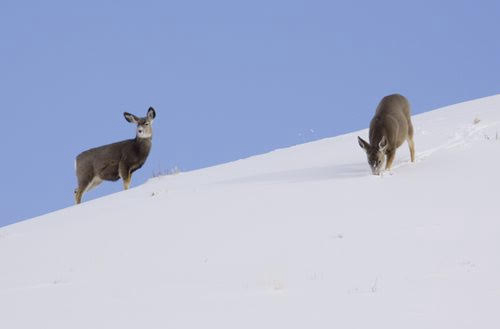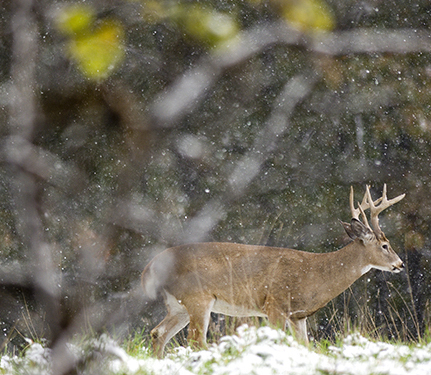Heavy late-winter snow will challenge Upper Peninsula deer population
Although early winter snow in Michigan’s Upper Peninsula was mild compared to the past few years, precipitation late in the season resulted in above-average snow depths that are continuing well into spring. These conditions are challenging deer in the region, and are expected to lead to lower survival and fawn recruitment rates than seen during the last few years.
Winter conditions are a significant factor for the U.P.’s deer herd. Mild winters, such as those experienced from 2010-2012, provide favorable conditions for over-winter survival and allow pregnant does to produce healthy fawns. Harsher winters with deep snows restrict movement and challenge energy reserves. Those conditions affect survival rates, particularly for deer living in harsher conditions, and put additional stress on pregnant does.
Due to the importance of winter conditions for Michigan’s deer population, weekly snow depth measurements are taken at various U.P. stations throughout the winter. This year, snow depths through January were below average, suggesting that winter may be mild once again. However, heavy precipitation in February and March left deep snows across the peninsula. Those conditions have extended well into April.
Biologists anticipate negative impacts to the deer herd when winter conditions persist longer than three months. Because of the heavy late-winter snowfall, U.P. deer are showing visible signs of winter fatigue, including thin body conditions and lethargic behavior. Biologists have already received reports of deer mortalities. Additional reports are anticipated in the coming weeks.
Population indices indicate that the deer population across the region experienced a low in 2009 following two consecutive harsh winters. The population has since been increasing. Although it is too early to determine the full impact of this year’s winter, biologists expect population growth will at least slow this year given the conditions.






